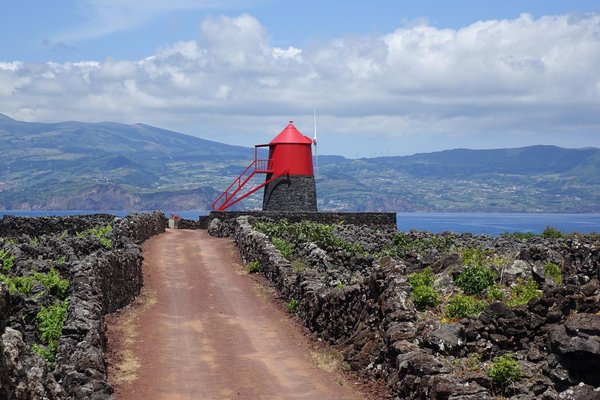Portugal
Pico Island
The Landscape of the Pico Island Vineyard Culture is the result of the agricultural practice of viniculture on a small volcanic island since the 15th century.
The area comprises two thin coastal strips that were adapted to growing vines on land unsuitable for other arable cultivation. The small-scale farmers created thousands of stone-walled fields for their crops. Cellars, distilleries and warehouses for wine production are also included.
Community Perspective: The pretty island of Pico is part of the Azores and can be reached by domestic flight. Visiting the site can be easily done by car or on walks from Magdalena. In Lajido de Santa Luzia you'll find the Vineyard Culture Interpretation Centre.
Site Info
Official Information
- Full Name
- Landscape of the Pico Island Vineyard Culture (ID: 1117)
- Country
- Portugal
- Status
-
Inscribed 2004
Site history
History of Pico Island
- 2004: Inscribed
- Inscribed
- 2003: Referred
- To nominate a more extensive area and as a cultural landscape
- Type
- Cultural
- Criteria
- iii
- v
Links
- UNESCO
- whc.unesco.org
- Official
-
- visitportugal.com — Visit Portugal: Pico Island
All Links
UNESCO.org
- whc.unesco.org — whc.unesco.org/
Official Website
- visitportugal.com — Visit Portugal: Pico Island
Community Information
- Community Category
- Human activity: Agriculture
- Cultural Landscape: Continuing
Travel Information
Recent Connections
-
Dry Stone Construction
"This cultural landscape (...) consists… -
Made out of basaltic material
"The material used to construct the cur… -
Located in a TCC Territory
Azores
Connections of Pico Island
- Geography
-
-
Macaronesia
-
Atlantic Ocean
-
Territorial Highest points
Punta de Pico 2351m/7713ft (Serra de Estrela on mainland Portugal is only 1953/6539ft) -
Mid-Atlantic Ridge
-
- Trivia
-
-
Cultural sites closely connected to volcanoes
spectacular coastal setting of the viniculture landscape sits at the foothills of Pico Mountain, a volcano that dominates the topography of the island (AB ev)
-
- Ecology
-
-
Stratovolcanoes
-
Seals
monk seal
-
- Architecture
-
-
Dry Stone Construction
"This cultural landscape (...) consists of a spectacular network of spaced-out, long volcanic dry stone walls running inland from, and parallel to, the ocean shore." (Talayotic Menorca Nomination file, p. 351) -
Made out of basaltic material
"The material used to construct the currais and buildings is largely composed of local, irregular, weatherworn, black basalt rocks." (official description)
-
- World Heritage Process
-
-
Cultural sites rejected for Natural criteria
Portugal's Pico Island was initially submitted as a mixed site in 2003, before being revised and nominated as a cultural landscape in 2004.
-
- Constructions
-
-
Windmills
"remains unmodified and almost entirely fixed in time in the 19th century when the windmills were added as the last significant accretion" (AB ev)
-
- WHS on Other Lists
-
-
ViTour
-
Global Geoparks
2013 - Azores Global GeoparkSee ens-newswire.com
-
Natura 2000
See ec.europa.eu
-
Located in a TCC Territory
Azores
-
- Timeline
-
-
Built in the 15th century
agriculture practice of viniculture started in the 15th century (AB)
-
News
No news.
Recent Visitors
Visitors of Pico Island
- Alexander Lehmann
- Ana Lozano
- Argo
- Atila Ege
- Bin
- Bram de Bruin
- Brendan Carroll
- Cheryl
- Christoph
- Christravelblog
- Clyde
- ctravel
- Dani Cyr
- Daniel Chazad
- David Marton
- Dimitar Krastev
- Dwight Zehuan Xiao
- Elia Vettorato
- Els Slots
- Eva Kisgyorgy
- Evgenii
- Fan Yibo
- Federico P.
- FS
- George Gdanski
- Hadrianus
- Harry Mitsidis
- Iain Jackson
- Jasam
- Jonas Kremer
- Kevin247
- Krijn
- Lithobates
- Loic Pedras
- Luis Filipe Gaspar
- Maciej Gil
- manuel011197
- maryhattie
- Mikko
- MoPython
- Mozzer76
- Mtlmr
- Nicole Lampos
- Nihal Ege
- Piotr Wasil
- Rob Wilson
- Roger Ourset
- Roman Bruehwiler
- Samy G
- shoaibmnagi
- Slavi
- Solivagant
- Szucs Tamas
- Thomas Buechler
- Van Hung
- Walter
- WILLIAM RICH
- Yongcheng Liu
- Zoë Sheng
Community Reviews
Show full reviews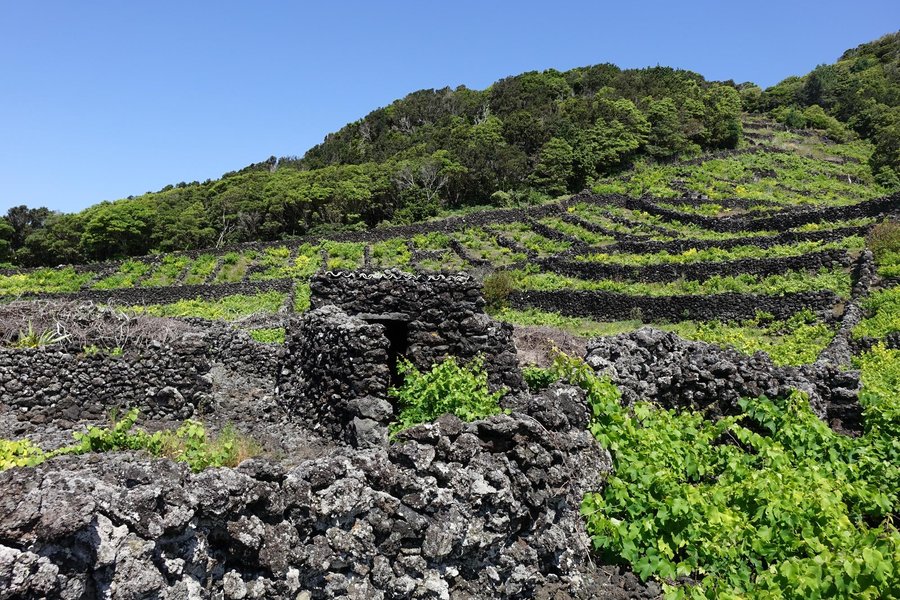
Vineyards are the topic of this WHS, and they will be extremely visible since the beginning of the trip on Pico island, coming via boat to Madalena. There are a few nice spots where to see from above the particular landscape, made of irregular lava bricks. I'd say that the main places to see the vineyards are around the wine museum at Madalena (which is worth a visit, also for the low prize), the Moinho do Frade (a bright red windmill in Criacao Velha), but the most amazing one is the view from Prainha Forest Park. You will get the chance to see many vineyards along the way, in any case. A bit out of topic, but we tasted several wines during our Azores vacations (all from Pico island) and some were better than others, but nothing extremely special. In addition, this kind of vineyard can be found very similar in Canary Islands. Pico is a very big island, but there are a few villages and 4 days may be the maximum amount of time you can spend there (whale tour excluded).
Keep reading 0 comments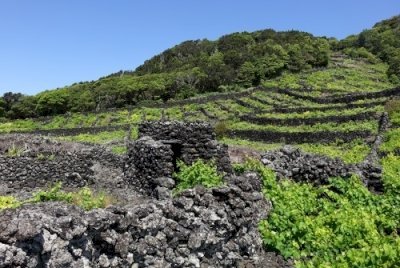
Out of the 9 main islands of the Azores, Pico Island may be the prettiest one. Its lush green flora strongly contrasts with the abundant black lava stone that is present along its coasts. Its iconic stratovolcano peak is a landmark in the Azores part of the Atlantic Ocean. And there’s a WHS as well: the Vineyard Landscape of Pico Island comprises two narrow strips of land along the coast, where grapes are grown on a bottom of solid lava. Within stone fences, grapes were traditionally grown between the rocks of the lava stone - without soil. This part of Pico was unsuitable for ordinary farming.
The northern part of this WHS lies right next to the airport of Pico, so it’s a really nice welcome when you fly in. The plots neatly divided by walls of basaltic blocks are a memorable sight. I stayed for 3 nights near the other stretch of vineyards though, at Madalena. There’s a great walk through the WHS landscape that you can do in that area. It starts in Porto Calhau. I did not rent a car on Pico (also not on Terceira), and got around easily by hiking, one-way taxi rides and the occasional public bus. To get to Porto Calhau I took a taxi. The driver was very much aware of the starting point of the hike, it’s very popular and well-signposted.
The walk starts on the paved road along the coast. It's a minor road, I encountered little traffic …
Keep reading 0 comments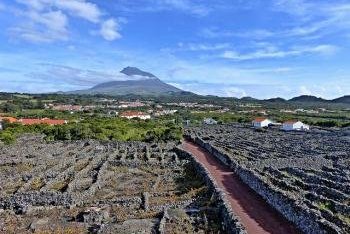
I visited this WHS in October 2015. This is undoubtedly my favourite vineyard culture WHS so far and I have visited quite a few. It's unique as the vines literally grow on volcanic rock and are pretty much the only thing that can be grown by man on this remote volcanic island. To reach Pico, I flew from Lisbon to Sao Miguel Island and then from Sao Miguel Island to Pico Island. The airport is the closest building/structure to the inscribed area which can be divided in 3 areas. The Criacao Velha is right between the Pico volcano and the Atlantic coast just opposite of Faial Island. This is where there are most black basalt walls arranged in the so-called currais that help protect the vines from the ocean. The currais form a network of small squarish or semicircular plots for wine-growing. The vineyards that are subdivided by double walls with a height of not more than 1 metre, with intermediate portals, are called jaroes. The best way to visit is by walking the Vinhas da Criacao Velha trail which passes through the inscribed area and ends by the lava coast. Around Candelaria, is the second part of the inscribed area where you can see the so-called canadas. These are volcanic vineyards with a larger surface area and mostly with less rock than in Criacao. Most canadas are subdivided into currais and traverses which prevent wind piping and several of them reach very close to the sea shore. Nearby there …
Keep reading 0 comments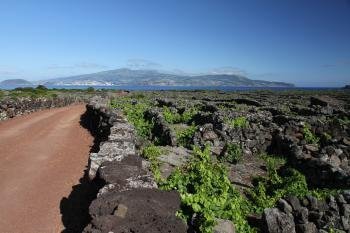
I visited Pico in July 2014. Pico is an island part of the Acores archipelago, lying in the midway in the Atlantic, some 1500 km from mainland Portugal. Getting there however is rather easy, from Lisbon, with a long stopover on Terceira Island. Plane tickets are relatively afordable considering the distance. The stopover on Terceira island is long enough to get to Angro de Herismo site and to Algar do Carvao cave, which is on the TL.
The WH site is a very small part of Pico island, clusterd on the western end. It consists mostly of small walled fields forming huge networks along the coast. The wall are made of black basalt stones protecting the crops from the strong Atlantic winds and from salt sprays. There is no soil, and vine crops are inserted directly into the cracks of the volcanic rocks. Some building, villages and ports are found around those fields and are part of the WHS.
Scenary is magnificient, lying between sea and the Pico volcanic peak in the background. Faial island lies across the sea in the west.
Visiting the area can be easily done from Magdalena, a small town on the west end of Pico island. The site lies either north or south from Magdalena. The southern part can be visited by foot from the town. There is a small bathing place to relax mid-way (no beach on Pico, since it is a volcanic island, and bathing is only recommended in designated area as strong …
Keep reading 0 comments
